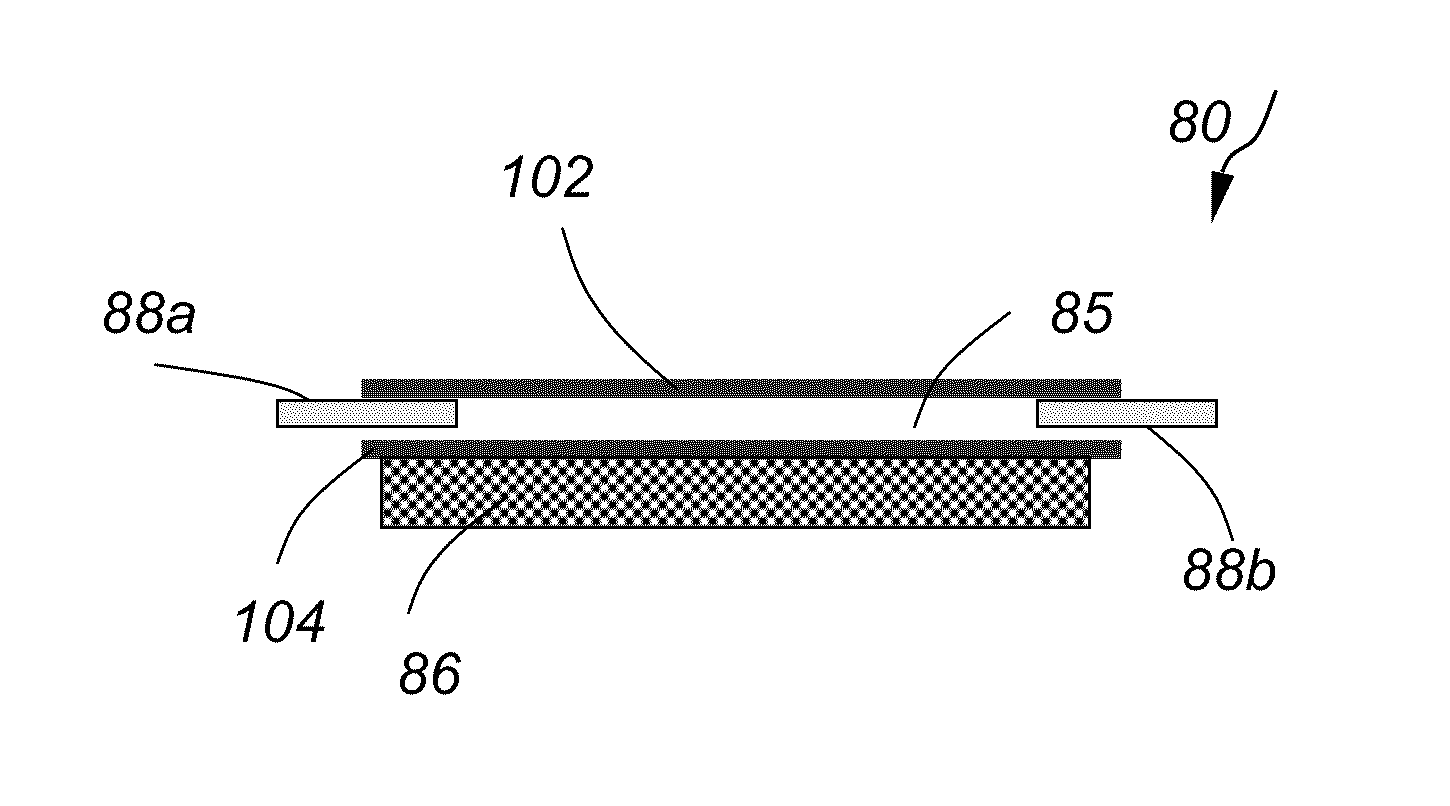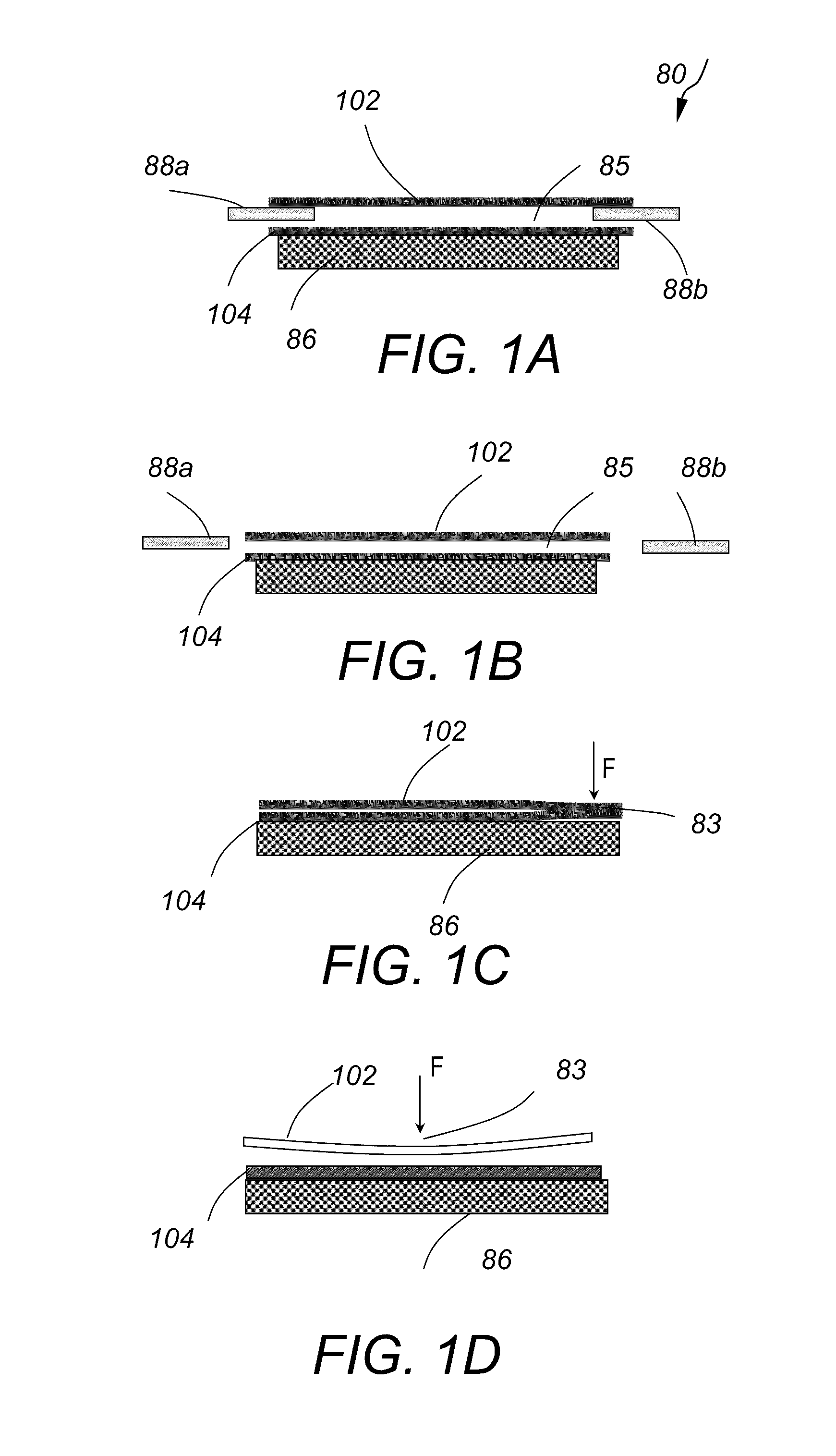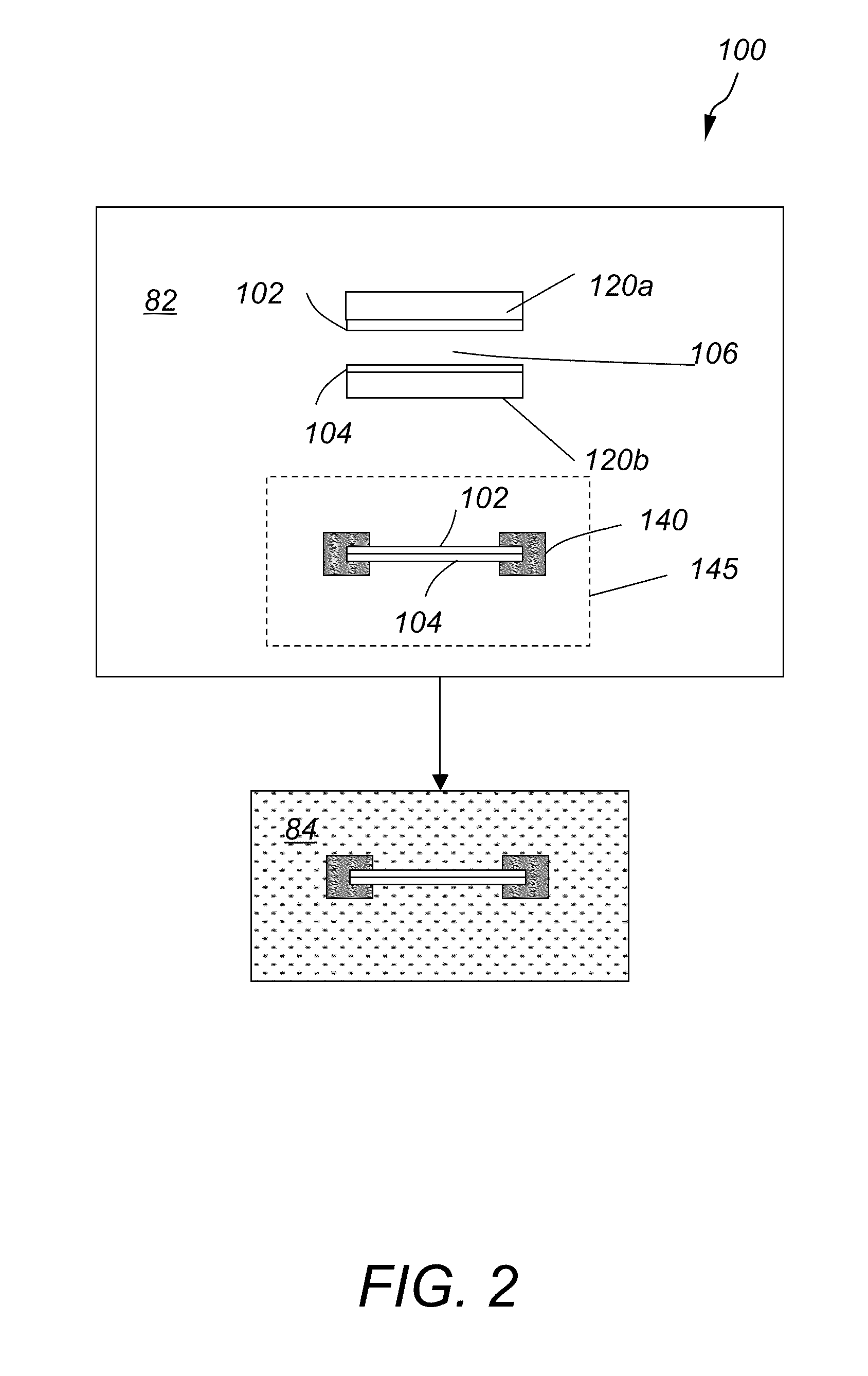Method and apparatus for wafer bonding with enhanced wafer mating
a technology of enhanced wafers and wafers, applied in the direction of manufacturing tools, controlling lamination, transportation and packaging, etc., can solve the problems of over-all processing yield and manufacturing cost of the so produced, the final product where the wafer alignment may be degraded to more than several micron accuracy levels, and the influence of the cost of electronic products incorporating these devices
- Summary
- Abstract
- Description
- Claims
- Application Information
AI Technical Summary
Benefits of technology
Problems solved by technology
Method used
Image
Examples
Embodiment Construction
[0035]Referring to FIG. 1A, in a typical direct wafer bonding process 80, wafers 102, 104 are oriented horizontally and are aligned parallel to each other. The lower wafer104 is placed face up on a flat lower carrier (chuck) 86. The upper wafer 102 is placed face down on mechanical spacers 88a, 88b. The proximity gap 85 between the wafers is defined by the spacer thickness and position. Next, the spacers 88a, 88b are removed and the upper wafer 82 floats on top of the lower wafer 85 due to the air cushion 85 between the two flat surfaces, as shown in FIG. 1B. Next, a force F is applied at one single point 83 (typically at wafer edge, shown in FIG. 1C, or center, shown in FIG. 1D) to bring the wafers 102, 104 in close proximity or atomic contact and initiate the bonding based on Van-der-Waals forces. A linear or circular bond-front propagates, moving the air out of the contact interface and leaving the surfaces in atomic contact.
[0036]Referring to FIG. 2, an improved wafer bonding eq...
PUM
| Property | Measurement | Unit |
|---|---|---|
| distance | aaaaa | aaaaa |
| distance | aaaaa | aaaaa |
| pressure | aaaaa | aaaaa |
Abstract
Description
Claims
Application Information
 Login to View More
Login to View More - R&D
- Intellectual Property
- Life Sciences
- Materials
- Tech Scout
- Unparalleled Data Quality
- Higher Quality Content
- 60% Fewer Hallucinations
Browse by: Latest US Patents, China's latest patents, Technical Efficacy Thesaurus, Application Domain, Technology Topic, Popular Technical Reports.
© 2025 PatSnap. All rights reserved.Legal|Privacy policy|Modern Slavery Act Transparency Statement|Sitemap|About US| Contact US: help@patsnap.com



